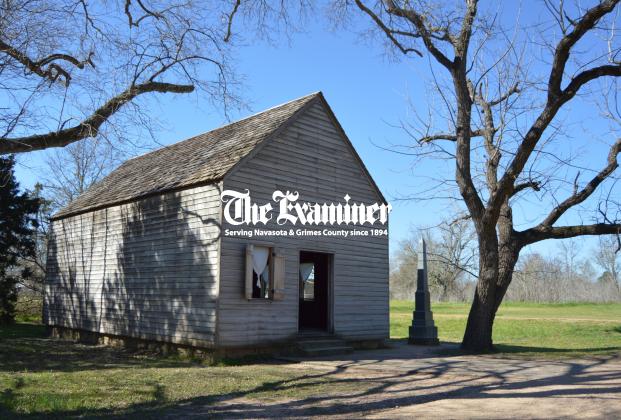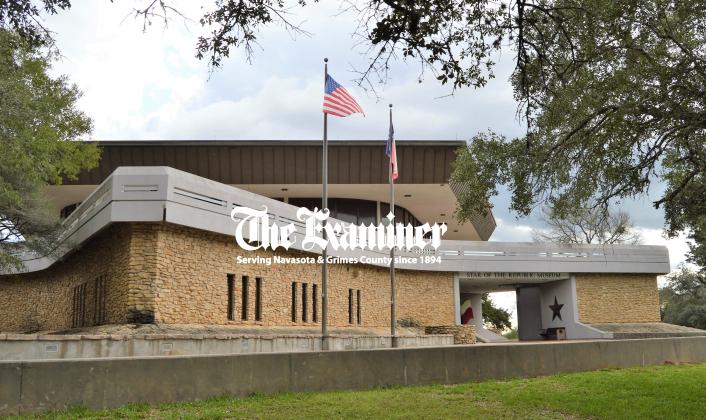Star of the Republic gets $44 million makeover
In 2019, the Texas Legislature transferred the operation and management of the Washington-on-the-Brazos State Historic Site (WOB) from the Texas Parks and Wildlife Department to the Texas Historic Commission (THC). Three years and a pandemic later, the hallowed ground that is the birthplace of Texas is about to undergo a major renovation.
Site Manager Jonathan Failor said, “One of the things that is coming about from this transition is a major investment in this site to the tune of $44 million. We have $34 million secured through public, federal and state funding. We can thank Senator Lois Kolkhorst for a lot of that support.”
Considering the last renovations were 20-25 years ago, Failor said, “It’s due for a refresh - bringing it into the 21stcentury to maintain relevancy and give the exhibits some new life. We’re now with an agency whose sole purpose is historic preservation. That’s what we do here. It’s our sole job.”
According to Failor, the WOB State Park Association now known as the WOB Historical Foundation, recognized long before the transition the need for a “refresh” and imagined a project which would cost a couple of million dollars. After the transition and Sen. Kolkhorst’s $8 million commitment plus $2.5 million pledged by THC chairman John Nau, III, Failor thinks the site is “getting the investment it deserves.” The Foundation has launched a capital campaign to secure the final $10 million.
Star to shine brighter
Almost every building on the 300 acres will see some improvements but the primary focus is The Star of the Republic Museum followed by the re-creation of buildings from the original Washington townsite. While the master plan is in varying stages of design, the conceptual design for the museum is finished. Failor anticipates it will close this summer or fall to begin the renovations and will take about 600 days to complete.
He said, “When we’re talking about renovation, not only are we renovating the exhibits, the building needs renovation, too.”
Those improvements include coming into compliance with the Americans with Disabilities Act, meeting current fire code and installation of an improved fire suppression system to protect the collections. The present ramp is coming out and a new staircase and improved elevator system will be installed. The museum will also get a new roof, a second-floor emergency exit off the terrace and the current office space will become a dedicated children’s and family gallery off a new lobby which will be created by enclosing the museum’s first star point.
Failor said, “Exhibits will be sensitive to not only visually and hearing impaired but we’re designing exhibits for folks who are on the spectrum. We want to make sure we’re creating exhibits that are not sensory overload, or if there is a lot of sensory engagement, we can turn that off.”
With more than 9,000 objects in the collection, Failor said it’s easy to walk through and not see everything.
He said, “For instance, we have what is believed to be the only known Lone Star flag from the Republic period. That’s an incredibly significant object and it’s going to be given a place of prominence.”
Washington townsite
Failor pointed out that while Independence Hall is the site of the signing of the Declaration of Independence, the town’s history didn’t end there. In 1842, President Sam Houston brought the seat of Texas government to Washington and it served in that capacity until 1845. During the 1850s, Washington boasted a population of approximately 1,000 residents.
Failor said, “This winter we plan on surveying the town to find the original town lots and streets.”
One noninvasive option for targeted archeology is lidar. Lidar, which stands for Light Detection and Ranging, is a remote sensing method that uses light in the form of a pulsed laser which can read surface fluctuations and find old roads and trails.
He continued, “We want to use the technology available to us to pinpoint the areas of interest to us. We’ve suggested to our leaders and designers to build as many as four new buildings.”
Buildings of interest include Hatfield’s Exchange, a saloon, where the Eighth and Ninth Congress met on the second floor and the Bailey, Gay & Hoxey store where the Republic’s Seventh Senate met.
According to Failor, the Treaty of Bird’s Fort with multiple Indigenous tribes was also signed in Washington.
He said, “Multicultural stories took place here and we tend not to tell those stories. Building parts of the town will allow us to really share not just Washington’s significance during 1836 but during the Republic.”
Cushman murals
Of concern to many local artists and history buffs is the disposition of museum murals painted by former Navasota artist Russell Cushman.
Failor said, “The plan right now is for those murals not to remain. Part of that is because of the structural changes that are happening at the museum, the ramp and elevator being moved. They’re painted directly on ¾-inch drywall. The elevator is going to be moved to that wall, and stylistically, the redesign is going in a different direction. Those murals are wonderful. They were painted for the last exhibit redesign.”
He continued, “We understand that there are folks who will be sad to see them go. If that’s the ultimate fate of the murals, we will preserve them digitally.”
Failor advised that a conservator did visit the site to assess the panels but as of publication, the final report hasn't been received.
Responding to concerns about “revisionist history,” Failor said, “I can say that Sen. Kolkhorst has been a part of this process from the beginning. She’s deeply invested in this project. I can’t speak to modern political theory but I can say that our goal is to tell the whole story of Texas.”
He continued, “We want to include the perspectives of the women that were here in town, the African Americans, the Indigenous people, the Tejano people. Texas is a wonderful melting pot of culture and that’s part of what the story will be. We’re very intentional about the decisions we’re making. Our volunteers, Friends group, the Foundation are in lockstep with us as we move forward with this project.”
Meeting user needs
Improvements will also be made to the Visitor’s Center and both the Education and Conference centers. The Education Center will become office space for interpreters and long overdue upgrades to the Conference Center are forthcoming. At present, it lacks screens, projectors and “a good sound system.”
With the need to prioritize funds, the Amphitheater and the Brazos Overlook were not included in the renovation. According to Failor, Hurricane Harvey changed the Brazos Riverbank making it unsafe for routine maintenance and visitors. WOB is, however, strategizing with the Texas A&M Forest Service on how to clear and stabilize the banks.
Failor said, “Washington and Grimes County residents, all of us who live in the Brazos Valley, know why this place is significant, what it means to Texans. It really deserves this investment and commitment to keeping it fresh and keeping it relevant for not only young Texans and old Texans but new Texans, too. A lot of people move here that we need to connect with as well so they know the state’s history. This $44 million project is a once-in-a-lifetime opportunity for this site which absolutely deserves every bit of exposure and every bit of love that places like the Alamo and San Jacinto get. Washington-on-the Brazos Texas as we know it doesn’t exist without this place.”





